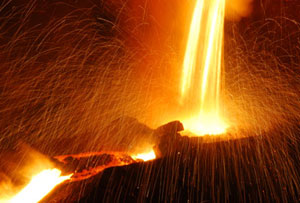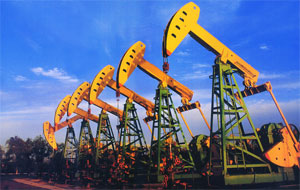Where Are Rare Eearth Elements Used
Applications of Rare Earths
Rare earth elements exhibit indispensable magnetic, optical and electrical properties. They improve product performance, increase product range and raise manufacturing efficiency. Their high efficacy at low dosages supports refining product composition, enhancing scientific and technological content and promoting industrial progress. They are utilised in metallurgy, military applications, petrochemical processes, agriculture, glass ceramics and advanced material sectors.

Metallurgical Industry
Rare earth elements have been used in metallurgy for 30 years. Their technology is well established. Rare earth additives in iron, steel and non‐ferrous metals cover a broad range and offer considerable potential. Rare earth silicides or fluorides have been added to steel for refining and desulphurisation, thereby improving processing performance. Rare earth ferrosilicon or silicon‐magnesium alloys serve as spheroidisation agents for the production of spheroidal cast iron. They support the manufacture of cast irons for automotive, tractor, diesel engine and other mechanical applications. In non‐ferrous alloys, rare earths are added to magnesium, aluminium, copper, zinc and nickel to improve physical and chemical properties.

Military Sector
Rare earths improve product quality and performance owing to their physical and electrical properties. Their addition improves the tactical performance of steel, aluminium, magnesium and titanium alloys in tanks, aircraft and missiles. Rare earth compounds are employed as lubricants in electronics, lasers and the nuclear industry. Their application in military technology contributes to advancements in military science and technology.

Petrochemical Industry
Rare earth elements are used in the production of molecular sieve catalysts in the oil and chemical industries. They offer high activity, good selectivity and strong resistance to heavy metal poisoning. They can replace aluminosilicate catalysts in catalytic cracking processes. In the production of ammonia and nitric acid, rare earth catalysts attain 1.5 times the capacity of Ni‐Al catalysts. Composite rare earth oxides also serve as catalysts for exhaust gas purification in combustion engines. Cerium naphthenate is available as a drying agent for paints.

Glass Ceramics
Glass ceramics containing rare earths form a fundamental material in industry and daily life, and they are essential in high‐technology sectors. Rare earth oxides or concentrates serve as polishing powders. They are used to polish optical glass, glass plates, tubes and utensils made from plastic and metal. In glass melting processes, cerium oxide oxidises iron, thereby reducing the iron content and removing the green tint from the glass. Rare earth oxides are employed in optical and specialised glasses. They are used for infrared and ultraviolet absorption, heat resistance, acid resistance and X‐ray shielding. Rare earths in ceramic glazes reduce fragmentation and allow varied colour and gloss in products. This application is widespread in the ceramic industry.

Agricultural Applications
Rare earths increase plant chlorophyll content, boost photosynthesis, promote root development and enhance nutrient uptake through roots. They accelerate seed germination, increase the germination rate and stimulate seedling growth. Additionally, they improve disease resistance, cold tolerance and drought tolerance in certain crops. Numerous studies have shown that appropriate concentrations of rare earths promote the uptake, conversion and utilisation of plant nutrients. The vitamin C content, total sugar content and sugar‐to‐acid ratio in apples and citrus fruits increased following foliar application of rare earths. They inhibit respiration and reduce decay.

New Material Field
NdFeB rare earth permanent magnetic materials exhibit high remanence, high coercivity and a high energy product. They are used in electronics, aviation and for driving wind generators, particularly in marine power plants. Pure rare earth oxides combined with iron oxides form garnet single crystals and polycrystals that are used in microwave electronics. High‐purity neodymium oxide combined with neodymium yttrium aluminium garnet glass is utilised in solid‐state laser materials. Rare earth boride hexahydride is employed in the production of cathode electron emission devices. Lanthanum chromate is applied in high‐temperature thermoelectric materials. In agriculture, rare earth nitrate is applied to field crops, increasing yields by 5–10%. In the textile industry, rare earth chloride is frequently used for tanning fur, dyeing fur and colouring yarns and carpets. Rare earths are also utilised in automotive catalysts that convert major exhaust pollutants into non‐toxic compounds.
Other Applications
Rare earths are incorporated in various digital products including audiovisual, photographic, communication and other electronic devices. They meet requirements for devices that are smaller, faster, lighter, more durable and energy‐efficient. They are also applied in green energy, medical treatment, water purification and transportation.

 Bars
Bars
 Beads & Spheres
Beads & Spheres
 Bolts & Nuts
Bolts & Nuts
 Crucibles
Crucibles
 Discs
Discs
 Fibers & Fabrics
Fibers & Fabrics
 Films
Films
 Flake
Flake
 Foams
Foams
 Foil
Foil
 Granules
Granules
 Honeycombs
Honeycombs
 Ink
Ink
 Laminate
Laminate
 Lumps
Lumps
 Meshes
Meshes
 Metallised Film
Metallised Film
 Plate
Plate
 Powders
Powders
 Rod
Rod
 Sheets
Sheets
 Single Crystals
Single Crystals
 Sputtering Target
Sputtering Target
 Tubes
Tubes
 Washer
Washer
 Wires
Wires
 Converters & Calculators
Converters & Calculators
 Write for Us
Write for Us
 Chin Trento
Chin Trento



